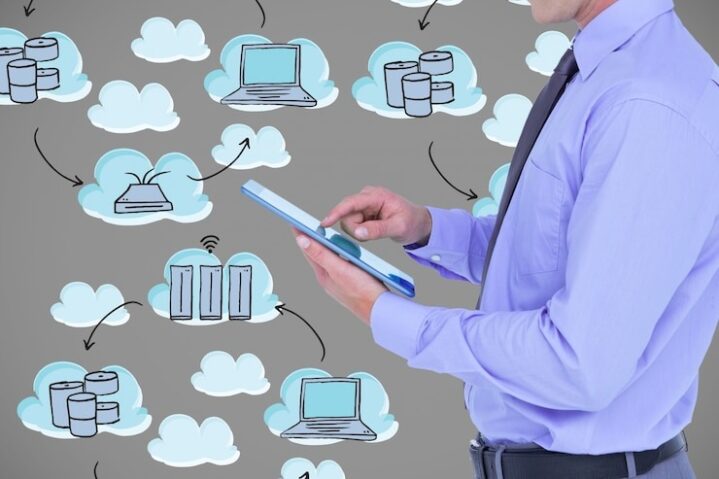The transition to SAP S/4HANA is far more than a technical migration—it’s a transformational journey that empowers businesses to modernize operations, boost agility, and unlock real-time analytics. With SAP announcing the end of mainstream maintenance for SAP ECC by 2027 (with limited extensions until 2030), moving to S/4HANA has become a strategic priority.
However, there’s no one-size-fits-all approach to migration. Organizations must carefully consider factors such as system complexity, business objectives, deployment preferences, and budget to determine the most suitable strategy.
This guide explores the core SAP S/4HANA migration strategies, highlighting their advantages, challenges, and best practices to help enterprises migrate successfully.
1. Greenfield vs. Brownfield vs. Hybrid Approach
Choosing the right SAP S/4HANA migration strategy is key to a successful transition. Whether you want a fresh start, prefer to build on your existing system, or need a flexible mix of both, the Greenfield, Brownfield, and Hybrid approaches each serve different needs. Here’s a quick look at how they compare.

Greenfield (New Implementation)
The Greenfield strategy involves starting from scratch with a completely new SAP S/4HANA installation. This approach is ideal for organizations that aim to redesign business processes, eliminate historical inefficiencies, or migrate from non-SAP systems.
| Advantages | Disadvantages |
| Fresh start to reengineer business processes | Longer implementation timeline |
| Removes legacy system inefficiencies | Higher training and change management efforts |
| Facilitates faster adoption of SAP best practices |
Brownfield (System Conversion)
This strategy involves converting an existing SAP ECC system to S/4HANA, retaining customizations, historical data, and core business logic.
| Advantages | Disadvantages |
| Preserves existing configurations and data | Inherits legacy complexities |
| Minimal disruption to business users | May limit innovation due to outdated processes |
| Faster go-live compared to Greenfield |
Hybrid (Selective Data Transition)
Hybrid migration combines Greenfield and Brownfield approaches. It allows organizations to migrate specific business units, processes, or datasets selectively.
Best Suited For:
- Large enterprises with complex landscapes
- Organizations seeking partial modernization without complete overhaul
2. Pre-Migration Assessment and Readiness Check
Before starting the migration, it’s essential to thoroughly evaluate your current SAP landscape, and one of the most effective ways to do that is by using tools like SAP Readiness Check.

This step helps uncover key factors such as how custom code will be affected, the volume and quality of existing data, which business functions are actively in use, and how well your current setup aligns with SAP S/4HANA requirements.
Conducting this kind of assessment offers several important benefits:
- Minimizes the risk of unexpected downtime
- Clarifies scope and priorities
- Helps define project timelines and resources
In short, a well-executed readiness check lays the groundwork for a smoother, more predictable transition to S/4HANA.
3. Data Migration Strategies and Tools
Clean and well-structured data is vital for system performance and decision-making in SAP. The data migration process includes:
- Data Extraction: This step involves pulling relevant information from your existing systems, whether SAP or non-SAP. It’s the foundation of the migration process, ensuring all necessary data is captured for transition.
- Data Cleansing: Once extracted, the data is cleaned to remove duplicates, correct errors, and standardize formats. Clean data reduces issues post-migration and improves system accuracy.
- Data Transformation: Here, the cleansed data is reshaped and aligned with the data structures and requirements of SAP S/4HANA. This ensures compatibility and smooth functionality in the new system.
- Data Loading: The final step involves moving the transformed data into the S/4HANA system using tools such as SAP S/4HANA Migration Cockpit, SAP Data Services, or trusted third-party ETL platforms. This step brings your historical and operational data into the new environment, ready for use.
4. Custom Code Adaptation and Optimization
SAP ECC systems often contain decades of custom code, much of which may not be compatible with SAP HANA. Tools like SAP Custom Code Migration Worklist and ABAP Test Cockpit help identify and address these issues.
Key Actions:
- Identify and eliminate unused or obsolete code
- Adapt syntax for HANA compatibility
- Rebuild functionality using S/4HANA APIs and extensions
Why This Matters:
- Improves system performance
- Ensures alignment with supported architecture
- Prepares your system for future innovation and integration
5. Selecting the Right Deployment Model: On-Premise, Cloud, or Hybrid
SAP S/4HANA offers multiple deployment options. The right choice depends on your organization’s customization needs, compliance requirements, and infrastructure strategy.
Here’s a clear comparison table showing the pros and cons of each SAP S/4HANA deployment model:
| Deployment Model | Pros | Cons |
| On-Premise | – Full control over infrastructure and data
– Deep customization – Meets strict compliance requirements |
– High initial investment
– Ongoing maintenance responsibility – Slower access to innovations |
| Cloud (Public/Private) | – Lower total cost of ownership
– Faster deployment and updates – Reduced IT burden |
– Limited customization in public cloud – Potential compliance/data residency concerns |
| Hybrid | – Combines control and flexibility
– Supports phased migration – Tailored workload separation |
– More complex architecture
– Requires integration between systems – Can be harder to manage long-term |
6. Phased vs. Big Bang Migration
Your migration timeline significantly influences business continuity. Choosing between a phased or big bang approach depends on resource availability and risk tolerance.
Big Bang
The entire organization transitions at once.
Pros: Simplified project management, quicker ROI
Cons: High risk in case of failure or issues
Phased
The migration occurs in stages—by department, geography, or process.
Pros: Easier change management, lower risk
Cons: More complex coordination, longer timelines
Best Practice: Begin with pilot rollouts in critical business units to validate the approach before scaling.
7. Integration Strategy with Legacy Systems and Third-Party Applications
Maintaining integrations during migration is essential for business continuity. This includes:
- Non-SAP systems (e.g., CRM, HR, Supply Chain)
- Third-party platforms (e.g., BI tools, tax engines)
- Partner platforms (e.g., banks, logistics)
Recommended Approaches:
- Use SAP Integration Suite for seamless connections
- Adopt API-first architecture to future-proof integrations
- Replace point-to-point links with scalable middleware solutions
Tip: Document and validate all integrations early in the migration cycle.
8. Change Management and User Training
Successful adoption of SAP S/4HANA depends heavily on how well people across the organization adapt to the change. This makes change management just as important as the technical side of the migration. A solid plan should start with clear and consistent communication to all stakeholders, so expectations and timelines are well understood from the start.
User training needs to go beyond basic instruction. It should be tailored, role-based, and timed appropriately—ideally beginning well before go-live. Redesigning access based on user roles is also key, ensuring people only see the data and tools relevant to their responsibilities. After the system is live, continued support and feedback loops help users stay confident and productive.
Tools like SAP Enable Now provide digital, in-app guidance to ease the learning curve, while Learning Management Systems (LMS) offer a structured approach to ongoing training. A great way to boost internal momentum is by identifying “change champions” within teams—people who are quick to adapt and can help others do the same.

9. Downtime Minimization and Business Continuity Planning
Unplanned downtime can be costly. Leverage tools like Near-Zero Downtime (NZDT) and Database Migration Option (DMO) to reduce system outages.
Strategies to Limit Downtime:
- Schedule go-live during low business activity
- Use parallel environments for testing and cutover
- Keep all departments informed and prepared
Tip: Develop a rollback plan and rehearse it to ensure readiness.
10. Post-Migration Testing, Validation, and Optimization
After go-live, the focus moves from implementation to stabilization, performance optimization, and ensuring the system delivers tangible business value. This stage requires thorough testing to validate functionality, assess system performance under load, confirm security and compliance standards, and perform financial reconciliations to ensure data accuracy.
Once testing is complete, the next step is optimization. This includes automating workflows using SAP Fiori applications, fine-tuning system performance and analytics for smoother operations, and enabling real-time reporting through dashboards that provide actionable insights.
To truly measure success, it’s important to define key performance indicators (KPIs) early and track them regularly. Monitoring ROI and system usage over time helps ensure the solution evolves with the business and continues delivering long-term value.
Conclusion
Choosing the right SAP S/4HANA migration strategy requires deep collaboration between business and IT teams, a clear vision for the future, and careful execution. Whether your path is Greenfield, Brownfield, or Hybrid, aligning the migration approach with long-term business objectives is essential.
With proper planning, the right tools, and a proactive mindset, organizations can unlock the full potential of SAP S/4HANA—enhancing agility, driving innovation, and staying competitive in today’s evolving digital landscape.
